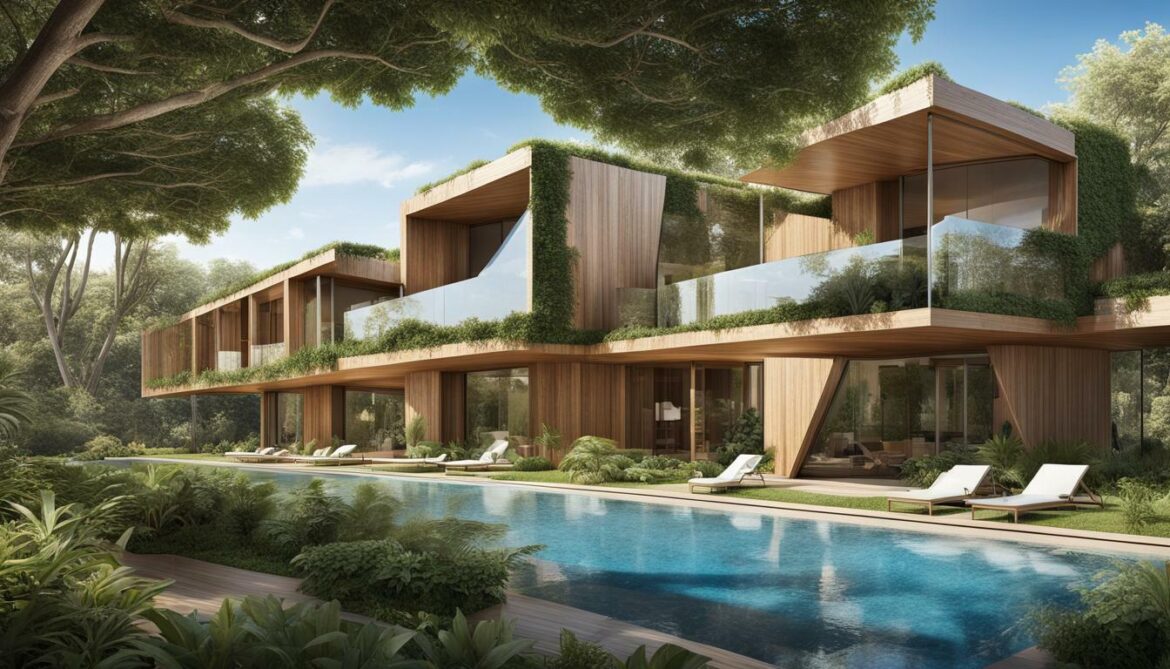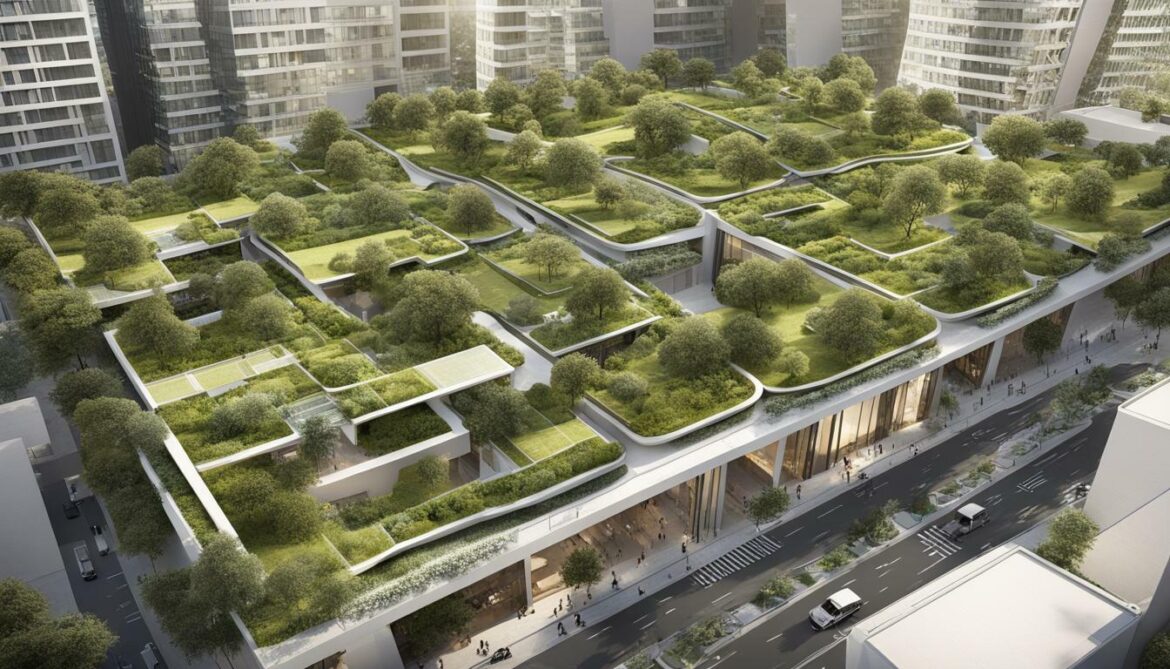If you’re passionate about sustainable development and eco-friendly practices, you’ll be excited to know that green building is gaining momentum in Argentina. Green building is a construction approach that prioritizes ecological sustainability, responsible resource management, and energy efficiency. It’s a way of developing buildings that minimize the impact on the environment while maximizing the health and comfort of the building’s occupants.
Argentina is home to a thriving green building industry, characterized by innovative sustainable architecture and eco-friendly construction practices. The country is rapidly embracing green building principles as a means of promoting sustainable development and reducing its carbon footprint.
It has a Green Building Council, with around 300 projects that are either registered or certified at the time of writing (September 2023). However, much of Argentina’s green building is currently located in the country’s capital city, Buenos Aires.
Green building Argentina is more than just a buzzword. It’s a fundamental shift towards environmentally conscious construction and development practices. Let’s explore some of the key sustainable architecture and eco-friendly construction practices that are shaping Argentina’s urban landscape.
Green Building Argentina Key Takeaways
- Green building Argentina prioritizes ecological sustainability, responsible resource management, and energy efficiency.
- Argentina is rapidly embracing green building principles as a means of promoting sustainable development and reducing its carbon footprint.
- Innovative sustainable architecture and eco-friendly construction practices are shaping Argentina’s urban landscape.
The Evolution of Green Building in Argentina
In recent years, there has been a growing emphasis on sustainable development and eco-friendly practices in Argentina’s construction industry. This has led to the evolution of green building practices, which focus on reducing the environmental impact of buildings while improving their overall efficiency and performance.
Green design in Argentina has come a long way since its inception, with architects and designers prioritizing sustainable development practices in their projects. The use of green infrastructure, such as green roofs and walls, has become increasingly popular in construction, providing numerous environmental benefits, including improved air quality and reduced urban heat island effect.
Furthermore, sustainable development practices are not only limited to new construction projects, but also include the renovation and retrofitting of existing buildings. Through green retrofitting, buildings can be made more energy-efficient, reducing their impact on the environment while improving their overall functionality and lifespan.
The Role of Sustainable Development in Argentina
Argentina’s focus on sustainable development has been driven by several factors, including the need to reduce its carbon footprint and improve energy efficiency. In response to these challenges, the government has introduced several initiatives to promote sustainable development practices across all sectors, including the construction industry.
One such initiative is the Green Building Council Argentina (GBCA), an organization that promotes sustainable development and green building practices in the country. Through its various programs and certifications, including the Leadership in Energy and Environmental Design (LEED) certification, the GBCA has played a key role in driving the adoption of sustainable development practices in Argentina’s construction industry.
Green Infrastructure in Argentina
Green infrastructure, such as green roofs and walls, has become increasingly popular in Argentina’s construction industry in recent years. These systems provide numerous environmental benefits, including improved air quality, reduced urban heat island effect, and increased biodiversity.
The use of green infrastructure in construction projects has also been shown to improve the energy efficiency of buildings, reducing their overall environmental impact. This is achieved by reducing the amount of heat absorbed by buildings, thereby reducing the demand for energy-intensive cooling systems.

Green Building Argentina Conclusion
The evolution of green building practices in Argentina has been driven by a growing focus on sustainable development and eco-friendly practices. Through the use of green infrastructure, sustainable design principles, and the adoption of energy-efficient technologies, Argentina’s construction industry is paving the way for a more sustainable future.
Energy-Efficient Buildings and LEED Certification in Argentina
Argentina is making strides in the development of energy-efficient buildings and the implementation of sustainable practices in construction. LEED (Leadership in Energy and Environmental Design) certification is becoming increasingly popular in the country, as more and more builders recognize the cost savings and environmental benefits of energy-efficient design.
LEED certification is awarded based on a number of criteria, including the use of renewable energy sources, sustainable building materials, and efficient water and energy usage. Buildings are awarded points for meeting these criteria, and are classified as Certified, Silver, Gold, or Platinum depending on the number of points earned.
LEED-certified buildings in Argentina include the Banco Galicia Tower in Buenos Aires, which received Gold certification for sustainable design and energy efficiency. The Tower features a range of energy-saving features, including a high-performance glass facade and efficient lighting and HVAC systems.

Other notable energy-efficient buildings in Argentina include the Mario Laserna Building in Cordoba, which features a range of sustainable features such as solar panels, rainwater harvesting systems, and passive cooling systems. The building received Platinum certification, the highest possible rating for LEED certification.
Energy-efficient buildings not only benefit the environment, but also lead to significant cost savings for building owners and occupants. By reducing energy usage and incorporating sustainable practices, builders can create healthier, more comfortable environments for occupants while reducing their environmental footprint.
Sustainable Materials and Environmental Construction in Argentina
As the demand for environmentally conscious construction practices continues to rise, more and more builders in Argentina are turning to renewable materials and eco-friendly construction methods. The use of sustainable materials not only helps to reduce the environmental impact of the construction industry, but it also promotes a healthier living environment for residents and enhances the economic sustainability of communities.
One of the most significant advantages of using renewable materials in construction is their ability to reduce carbon emissions. Traditional building materials, such as concrete and steel, have a significant carbon footprint due to the energy required to produce and transport them. Conversely, renewable materials, such as bamboo, adobe, and hempcrete, have a much lower carbon footprint, making them a more environmentally friendly option.
Innovative construction techniques are also being used in Argentina to minimize waste and reduce energy consumption. For example, some buildings are being designed to harvest rainwater and use it for irrigation or other purposes, reducing the need for municipal water sources. Other buildings are incorporating energy-efficient systems, such as solar panels and geothermal heating, to reduce their reliance on non-renewable energy sources.

Environmental consciousness is also driving construction practices in Argentina, with builders focusing on creating spaces that promote a healthy living environment. This includes utilizing non-toxic materials, improving indoor air quality, and implementing green spaces within and around buildings.
Overall, the use of sustainable materials and eco-friendly construction methods in Argentina is a positive step towards a more sustainable future. As the benefits of these practices continue to be recognized, it is likely that more and more builders will adopt them, leading to a more environmentally conscious construction industry.
Green Building Argentina: Projects Shaping Argentina’s Urban Landscapes
Argentina’s commitment to sustainable development has spurred the development of innovative green building projects that are transforming the country’s urban landscapes. These projects are designed to meet the evolving needs of society while minimizing the negative impact on the environment. Let’s take a closer look at some of the notable green building initiatives in Argentina.

One of the most significant green building projects in Argentina is the Ciudad Empresaria project, located in Córdoba. This development was constructed under strict environmental standards, including the use of renewable energy sources and low-emission materials. As a result, the Ciudad Empresaria project has achieved LEED Gold certification, underscoring its commitment to sustainable development.
Another noteworthy project is the BBVA Frances Tower, located in Buenos Aires. This tower is one of the tallest buildings in Argentina and is designed to be highly energy-efficient, featuring double-paned windows and extensive insulation to reduce heating and cooling costs. Additionally, the tower incorporates a rainwater harvesting system and a green roof, which helps to reduce stormwater runoff and improve air quality in the surrounding area.
The Alvear Tower, also located in Buenos Aires, is another exemplary green building project in Argentina. This tower boasts a unique design that makes use of natural ventilation and lighting, reducing the need for artificial lighting and air conditioning. Additionally, the Alvear Tower was constructed using recycled materials wherever possible, further reducing its negative impact on the environment.
These green building projects are just a few examples of Argentina’s commitment to sustainable development. By focusing on sustainable practices and minimizing negative environmental impact, Argentina is setting an example for other countries to follow.
Conclusion
In conclusion, green building in Argentina is becoming an increasingly important aspect of sustainable development in the country. Through sustainable architecture and eco-friendly construction practices, the evolution of green building in Argentina has prioritized energy-efficient design, the use of renewable materials, and the incorporation of green infrastructure in construction projects.
LEED certification has played a significant role in promoting energy-efficient buildings in Argentina, encouraging the implementation of environmentally conscious practices in the construction industry. Additionally, the use of sustainable materials and innovative construction techniques has further contributed to shaping Argentina’s urban landscapes, with notable green building projects showcasing the possibilities of sustainable development.
As we move towards a more sustainable future, it is essential that we prioritize environmentally conscious practices in all aspects of our lives, including construction and architecture. With green building in Argentina paving the way for sustainable development, we hope to inspire a wider movement towards eco-friendly principles and a more sustainable future for all.
FAQ
Q: What is green building?
A: Green building refers to the practice of creating structures and using processes that are environmentally responsible and resource-efficient throughout a building’s lifecycle.
Q: Why is green building important in Argentina?
A: Green building is crucial in Argentina because it promotes sustainable development, reduces environmental impact, improves energy efficiency, and enhances the health and well-being of occupants.
Q: What is sustainable architecture?
A: Sustainable architecture focuses on designing buildings that minimize negative environmental impact through energy efficiency, use of renewable materials, and integration with the natural surroundings.
Q: What are eco-friendly construction practices?
A: Eco-friendly construction practices involve using sustainable materials, minimizing waste, conserving energy and water, and promoting biodiversity in construction projects.
Q: How has green building evolved in Argentina?
A: Green building in Argentina has evolved to include sustainable design principles, incorporation of renewable materials, integration of green infrastructure, and a focus on energy-efficient buildings.
Q: What is LEED certification?
A: LEED (Leadership in Energy and Environmental Design) certification is a globally recognized rating system that measures the sustainability and environmental performance of buildings.
Q: What are the benefits of energy-efficient buildings?
A: Energy-efficient buildings reduce energy consumption, lower operating costs, improve indoor air quality, enhance occupant comfort, and contribute to a more sustainable future.
Q: What are some notable LEED-certified buildings in Argentina?
A: Some notable LEED-certified buildings in Argentina include the Banco Galicia headquarters, Alvear Tower, and the Hilton Buenos Aires.
Q: Why are sustainable materials important in construction?
A: Sustainable materials reduce the environmental impact of construction projects, promote resource conservation, and contribute to a healthier and more sustainable built environment.
Q: What are some innovative construction techniques used in Argentina?
A: Argentina utilizes innovative construction techniques such as prefabrication, modular construction, and the use of reclaimed and recycled materials.
Q: How do green building projects shape Argentina’s urban landscapes?
A: Green building projects in Argentina contribute to sustainable development, improve urban planning, create healthier communities, and showcase innovative architectural designs that prioritize environmental consciousness.
You may also like Green Building in Australia






















Post comments (3)